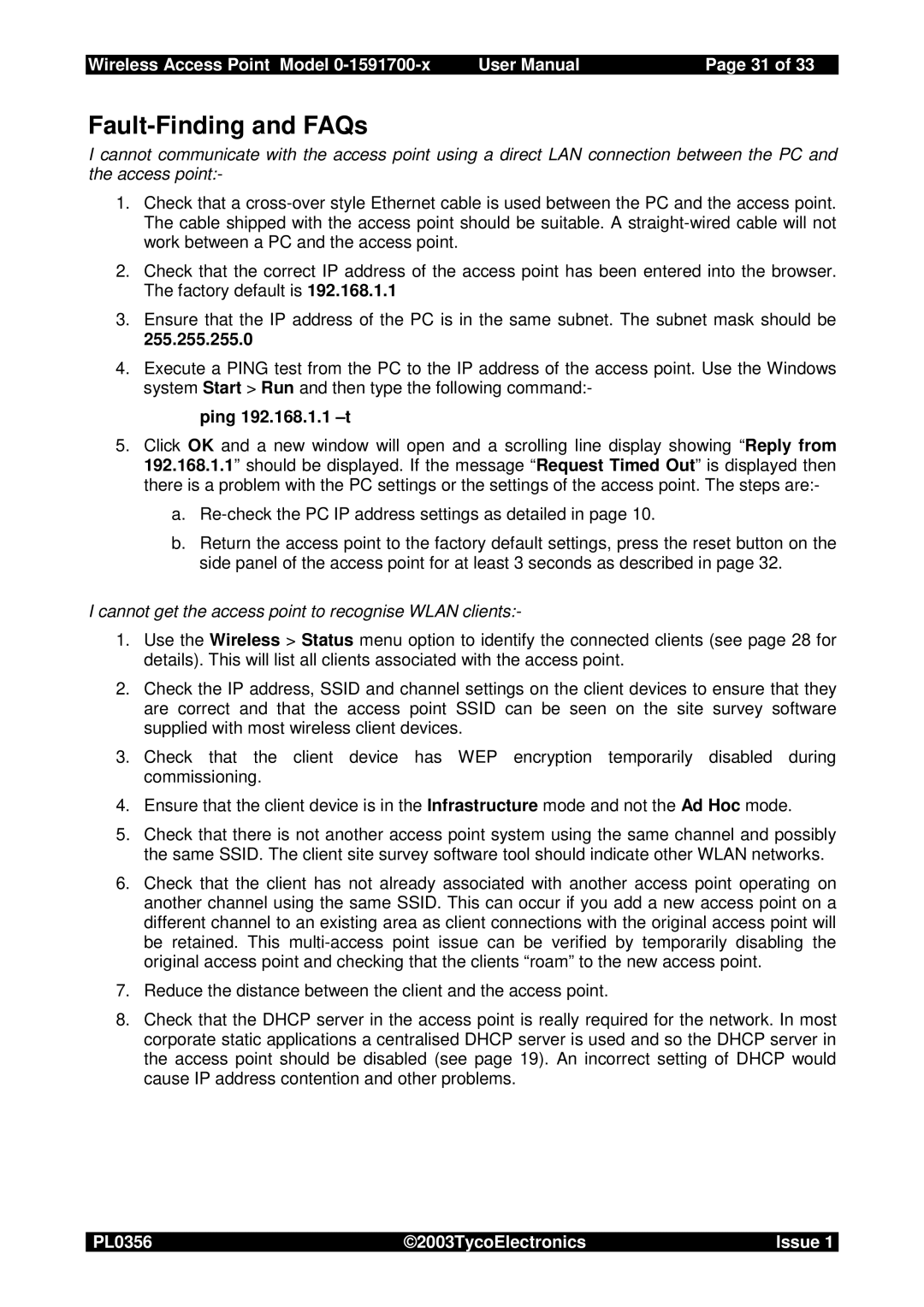Wireless Access Point Model | User Manual | Page 31 of 33 |
Fault-Finding and FAQs
I cannot communicate with the access point using a direct LAN connection between the PC and the access point:-
1.Check that a
2.Check that the correct IP address of the access point has been entered into the browser. The factory default is 192.168.1.1
3.Ensure that the IP address of the PC is in the same subnet. The subnet mask should be
255.255.255.0
4.Execute a PING test from the PC to the IP address of the access point. Use the Windows system Start > Run and then type the following command:-
ping 192.168.1.1 –t
5.Click OK and a new window will open and a scrolling line display showing “Reply from 192.168.1.1” should be displayed. If the message “Request Timed Out” is displayed then there is a problem with the PC settings or the settings of the access point. The steps are:-
a.
b.Return the access point to the factory default settings, press the reset button on the side panel of the access point for at least 3 seconds as described in page 32.
I cannot get the access point to recognise WLAN clients:-
1.Use the Wireless > Status menu option to identify the connected clients (see page 28 for details). This will list all clients associated with the access point.
2.Check the IP address, SSID and channel settings on the client devices to ensure that they are correct and that the access point SSID can be seen on the site survey software supplied with most wireless client devices.
3.Check that the client device has WEP encryption temporarily disabled during commissioning.
4.Ensure that the client device is in the Infrastructure mode and not the Ad Hoc mode.
5.Check that there is not another access point system using the same channel and possibly the same SSID. The client site survey software tool should indicate other WLAN networks.
6.Check that the client has not already associated with another access point operating on another channel using the same SSID. This can occur if you add a new access point on a different channel to an existing area as client connections with the original access point will be retained. This
7.Reduce the distance between the client and the access point.
8.Check that the DHCP server in the access point is really required for the network. In most corporate static applications a centralised DHCP server is used and so the DHCP server in the access point should be disabled (see page 19). An incorrect setting of DHCP would cause IP address contention and other problems.
PL0356 | ©2003TycoElectronics | Issue 1 |
